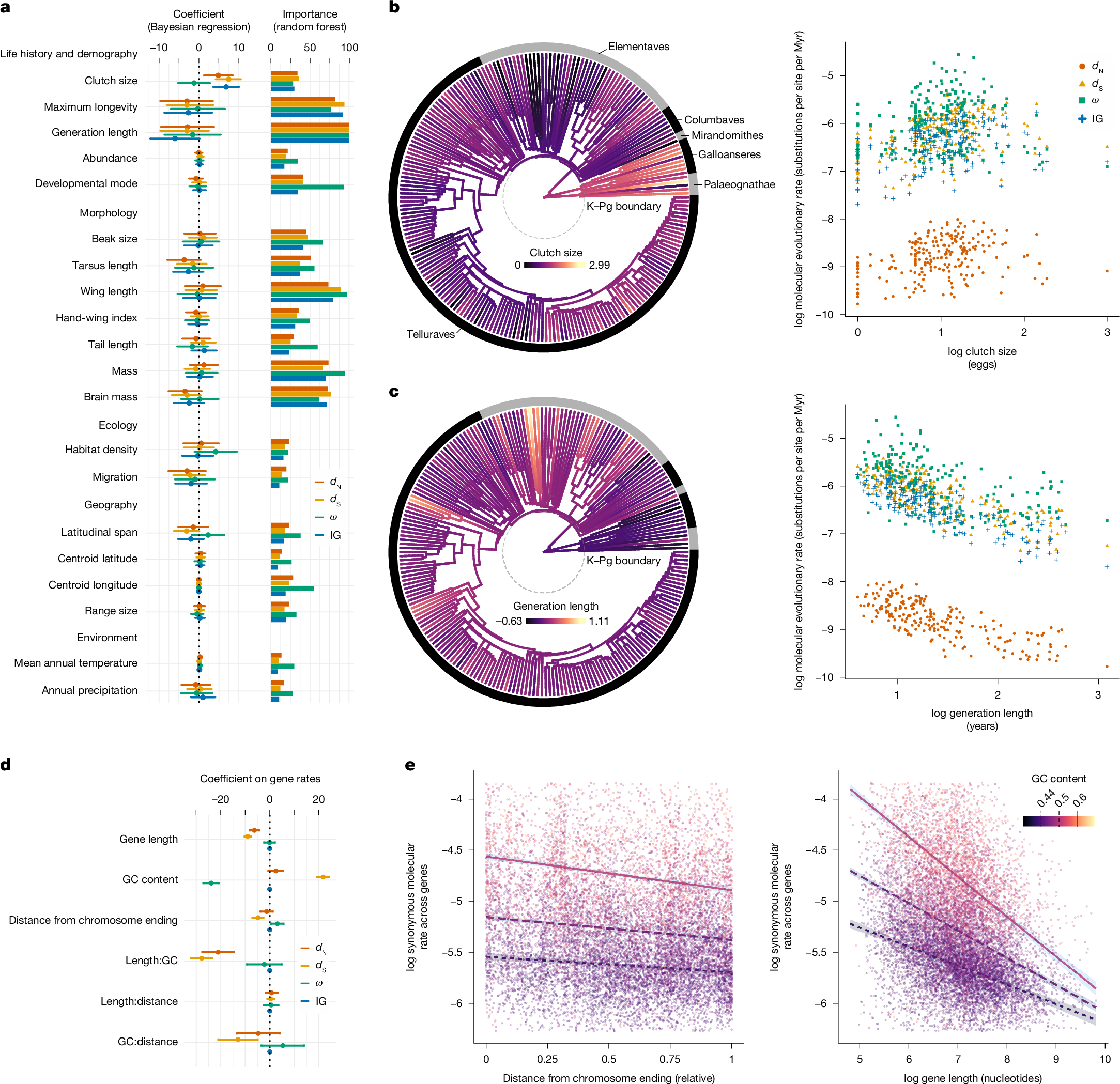2025-03-27 コペンハーゲン大学(UCPH)
<関連情報>
- https://news.ku.dk/all_news/2025/03/major-bird-study-could-help-us-fight-the-next-pandemic/
- https://www.nature.com/articles/s41586-025-08777-7
進化速度分解によって明らかになった鳥類のゲノム変化の要因 Drivers of avian genomic change revealed by evolutionary rate decomposition
David A. Duchêne,Al-Aabid Chowdhury,Jingyi Yang,Maider Iglesias-Carrasco,Josefin Stiller,Shaohong Feng,Samir Bhatt,M. Thomas P. Gilbert,Guojie Zhang,Joseph A. Tobias & Simon Y. W. Ho
Nature Published:19 March 2025
DOI:https://doi.org/10.1038/s41586-025-08777-7

Abstract
Modern birds have diversified into a striking array of forms, behaviours and ecological roles. Analyses of molecular evolutionary rates can reveal the links between genomic and phenotypic change1,2,3,4, but disentangling the drivers of rate variation at the whole-genome scale has been difficult. Using comprehensive estimates of traits and evolutionary rates across a family-level phylogeny of birds5,6, we find that genome-wide mutation rates across lineages are predominantly explained by clutch size and generation length, whereas rate variation across genes is driven by the content of guanine and cytosine. Here, to find the subsets of genes and lineages that dominate evolutionary rate variation in birds, we estimated the influence of individual lineages on decomposed axes of gene-specific evolutionary rates. We find that most of the rate variation occurs along recent branches of the tree, associated with present-day families of birds. Additional tests on axes of rate variation show rapid changes in microchromosomes immediately after the Cretaceous–Palaeogene transition. These apparent pulses of evolution are consistent with major changes in the genetic machineries for meiosis, heart performance, and RNA splicing, surveillance and translation, and correlate with the ecological diversity reflected in increased tarsus length. Collectively, our analyses paint a nuanced picture of avian evolution, revealing that the ancestors of the most diverse lineages of birds underwent major genomic changes related to mutation, gene usage and niche expansion in the early Palaeogene period.


